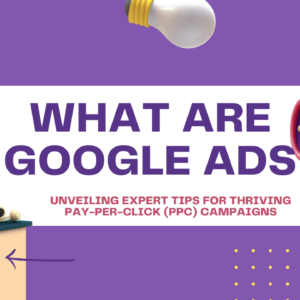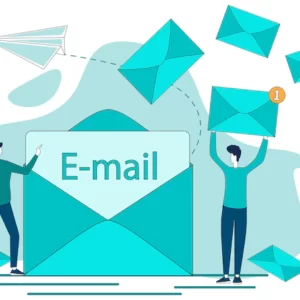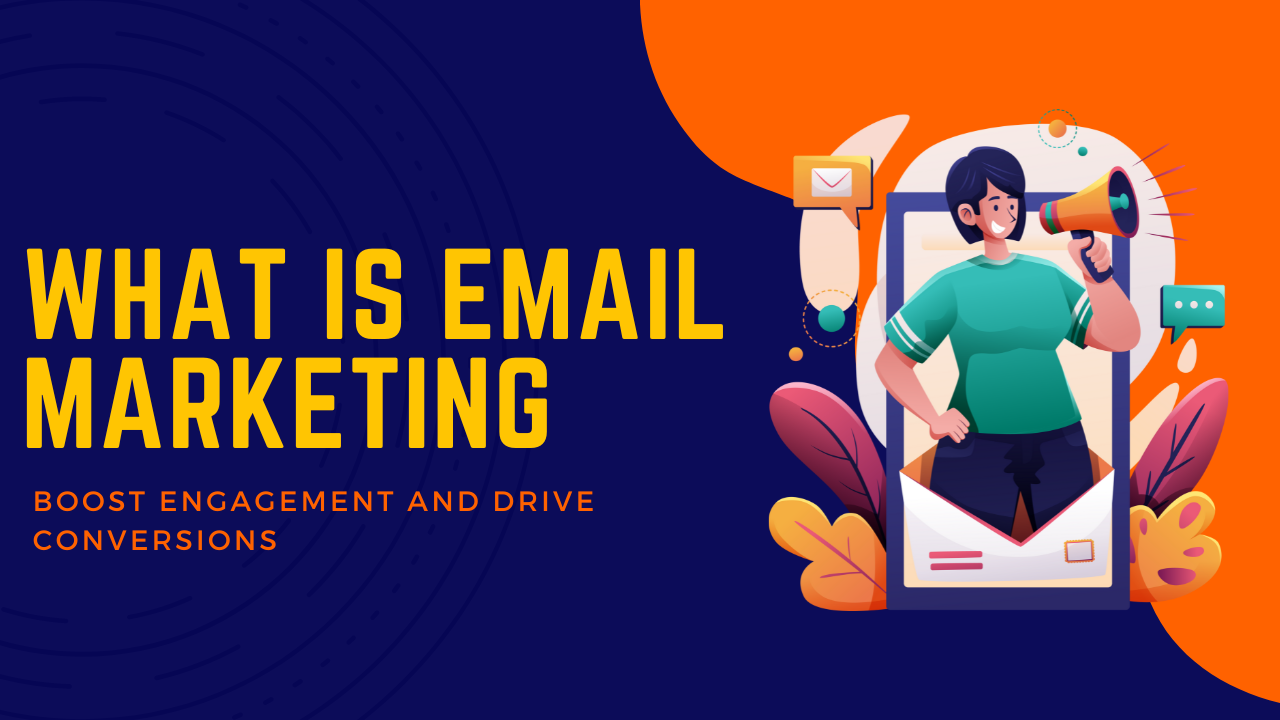Table of Contents
- Introduction
- Importance of Email Marketing for Businesses
- Why Following Best Practices is Crucial
- Part 1: Email Marketing Strategy
- Part 2: Deliverability and Authentication
- Part 3: Email Marketing Automation
- Part 4: Email Metrics and Analytics
- Part 5: Compliance and Privacy
- Summary
- Key Takeaways and Actionable Steps for Boosting Email Engagement and Conversions
- FAQs (Frequently Asked Questions)
- What is the best frequency for sending marketing emails?
- How do I improve my email open rates?
- What are some effective techniques for writing compelling email subject lines?
- How can I personalize my email campaigns without being intrusive?
- What should I do if my emails are marked as spam?
- How can automation help me save time and increase efficiency in email marketing?
- What metrics should I focus on to measure the success of my email campaigns?
- Are there any legal requirements I should be aware of when sending marketing emails?
- How can I ensure my emails are accessible and visually appealing on different devices?
- What steps should I take to build and maintain a good sender reputation?
Introduction
Email marketing has emerged as a powerful tool for businesses to connect with their audience, cultivate relationships, and drive conversions. In this ultimate guide, we will delve into the best practices that can help businesses optimize their email marketing strategies. By following these practices, you can boost engagement, increase open rates, click-through rates, and ultimately drive conversions.
Importance of Email Marketing for Businesses

Email marketing is an essential component of modern business strategies. It offers numerous benefits and advantages that make it a must-have tool for businesses of all sizes. From small startups to large corporations, email marketing allows businesses to reach their target audience directly, build brand loyalty, promote products or services, and nurture leads into loyal customers. It is cost-effective, provides measurable results, and offers a high return on investment (ROI).
Why Following Best Practices is Crucial
While email marketing presents immense potential, it can only be fully realized by following best practices. By implementing these practices, businesses can ensure the effectiveness of their email campaigns, enhance deliverability rates, maintain compliance with regulations, protect subscriber privacy, and achieve desired outcomes. Additionally, following best practices allows businesses to build a strong reputation, establish credibility, and create meaningful connections with their audience.
Part 1: Email Marketing Strategy

1. Defining Your Goals
To embark on a successful email marketing campaign, it is crucial to define clear goals. Start by determining the purpose of your email campaigns. Is it to nurture leads, promote new products, or drive sales? By defining your goals, you can align your email marketing strategy with your overall business objectives. Furthermore, setting measurable objectives enables you to effectively track the success of your campaigns and make data-driven decisions.
2. Building an Effective Subscriber List
The success of your email marketing efforts hinges upon the quality of your subscriber list. Rather than focusing on quantity, aim to attract high-quality subscribers who are genuinely interested in your offerings. Implement strategies such as creating engaging opt-in forms on your website, offering valuable incentives for subscribing, and leveraging social media to amplify your reach. By focusing on quality, you can ensure that your messages reach an engaged audience.
3. Segmenting Your Audience
Segmentation plays a pivotal role in maximizing the impact of your email campaigns. By dividing your email list into targeted segments based on specific criteria, you can personalize your messages and tailor them to resonate with each group. Consider factors such as demographics, purchase history, and engagement levels when segmenting your audience. This allows for highly targeted messaging that speaks directly to the unique needs and preferences of each segment.
4. Crafting Compelling Email Content
In email marketing, content is king. To create engaging email copy, focus on providing value, relevance, and a personal touch. Craft compelling subject lines that pique curiosity and optimize preview text to entice recipients to open your emails. Incorporate storytelling elements, use persuasive language, and maintain a conversational tone to establish a connection with your audience. Leverage copywriting techniques that evoke emotion, solve pain points, and highlight the benefits your products or services offer.
5. Designing Attention-Grabbing Emails
Email design plays a crucial role in capturing the attention of your recipients. Ensure your emails have a clean, visually appealing layout that aligns with your brand identity. Utilize responsive and mobile-friendly templates to optimize the viewing experience on various devices. Incorporate call-to-action buttons strategically, use eye-catching visuals, and maintain a balance between text and images. Implementing best practices in design ensures that your emails not only look professional but also encourage recipients to take action.
Part 2: Deliverability and Authentication
6. Ensuring High Deliverability Rates
Achieving high deliverability rates is fundamental for the success of your email marketing campaigns. To avoid spam filters, follow industry best practices such as maintaining a healthy sender reputation, sending from a reputable domain, and adhering to email volume thresholds. Regularly verify and clean your email list to eliminate inactive or invalid email addresses. By taking these precautions, you can increase the chances of your emails reaching the intended recipients’ inboxes.
7. Authentication Protocols and Sender Reputation
Implementing authentication protocols such as SPF, DKIM, and DMARC enhances your sender reputation and establishes trust with internet service providers (ISPs). SPF (Sender Policy Framework) verifies the authenticity of the sender’s IP address, DKIM (DomainKeys Identified Mail) adds a digital signature to ensure email integrity, and DMARC (Domain-based Message Authentication, Reporting, and Conformance) provides a comprehensive framework for email authentication and reporting. By adopting these protocols, you can decrease the likelihood of your emails being flagged as spam.
8. Avoiding Common Email Deliverability Issues
Dealing with bounce rates and spam complaints is essential for maintaining a high deliverability rate. Regularly monitor your bounce rates and take necessary actions to reduce them, such as removing invalid email addresses from your list or correcting typos. Additionally, promptly handle spam complaints by investigating the root cause and addressing it appropriately. Employ strategies like double opt-in to minimize the chances of recipients marking your emails as spam.
Part 3: Email Marketing Automation
9. Introduction to Email Marketing Automation
Email marketing automation streamlines your campaigns, saves time, and delivers personalized experiences at scale. It involves using software and tools to automate various aspects of your email marketing, such as sending targeted messages based on user behavior or demographic data. By leveraging automation, you can nurture leads, increase conversions, and provide a seamless customer journey.
10. Engaging Subscribers with Drip Campaigns
Drip campaigns are a powerful automation tool for engaging subscribers throughout their customer journey. By delivering a series of personalized, timely messages, you can nurture leads and guide them towards conversions. Craft relevant content for each stage of the customer journey, segment your audience based on their engagement and behavior, and trigger automated emails based on specific actions or time intervals. Drip campaigns allow you to deliver the right message to the right person at the right time, increasing the likelihood of conversions.
11. Retargeting and Behavioral Triggers
Retargeting and behavioral triggers enable you to reach out to subscribers based on their actions or inactions. Leverage customer data to create segments of subscribers who have shown interest but have not converted. Craft personalized emails that address their specific needs or offer incentives to re-engage them. By customizing your messages based on user behavior, you can effectively promote relevant products or services and rekindle their interest.
12. Personalization and Dynamic Content
Personalization is a key aspect of successful email marketing. Tailor your email content to reflect recipients’ preferences, past interactions, and demographic data. Implement dynamic content based on user behavior, such as displaying personalized product recommendations or dynamically populating email content with relevant user information. Personalization creates a sense of individuality and relevance, enhancing engagement and driving conversions.
Part 4: Email Metrics and Analytics
13. Key Email Marketing Metrics to Track
To evaluate the success of your email campaigns, it is crucial to track key metrics. Focus on measuring open rates, click-through rates, and conversions. Open rates indicate the effectiveness of your subject lines and preview text in capturing recipients’ attention. Click-through rates measure the engagement levels of your audience, indicating the effectiveness of your email content and call-to-action buttons. Conversions reflect the ultimate goal of your campaigns and help determine the overall effectiveness of your email marketing efforts.
14. A/B Testing and Optimization
A/B testing allows you to compare different elements of your email campaigns to optimize performance. Conduct effective A/B tests by modifying variables such as subject lines, call-to-action buttons, or email layout. Analyze the results and apply the insights gained to optimize your campaigns. Continuously refine your email content, design, and strategies to improve engagement and achieve better results.
15. Leveraging Analytics for Continuous Improvement
Make informed decisions by analyzing email data and deriving actionable insights. Dive deeper into metrics, trends, and subscriber behavior patterns to gain a comprehensive understanding of your audience. Implement changes based on the insights gained from analytics, such as refining your email content, adjusting segmentation criteria, or adopting new automation techniques. By leveraging analytics, you can continuously improve your email marketing campaigns and boost engagement.
Part 5: Compliance and Privacy
16. Staying Compliant with Email Marketing Laws
To ensure compliance with email marketing laws, familiarize yourself with global regulations, such as the General Data Protection Regulation (GDPR) and the CAN-SPAM Act. Obtain consent from recipients before sending them marketing emails, provide clear opt-out options, and honor unsubscribe requests promptly. Adhere to anti-spam laws and respect the privacy rights of your subscribers. By staying compliant, you can build trust and maintain a positive brand reputation.
17. Protecting Subscriber Privacy and Data
Subscriber privacy is of utmost importance in email marketing. Implement robust security measures to safeguard subscriber information from unauthorized access or breaches. Establish and communicate your data protection and privacy policies to assure subscribers of their confidentiality. Regularly update and maintain your security systems and processes to stay ahead of potential threats. By prioritizing data protection, you can foster trust and loyalty among your subscribers.
18. Handling Customer Preferences and Consent
Respect subscriber preferences by offering options to manage their email preferences easily. Allow them to customize the frequency and types of emails they receive. Additionally, obtain explicit consent for processing their data and clearly communicate the purposes for which their data will be used. Honoring customer preferences and explicit consent not only promotes transparency but also strengthens your relationship with your audience.
Summary
In this comprehensive guide, we have explored the importance of following email marketing best practices to boost engagement and drive conversions. From defining your goals and building an effective subscriber list to leveraging automation, optimizing email metrics, and staying compliant with regulations, each aspect plays a crucial role in the success of your email marketing campaigns. By implementing the strategies and techniques discussed, businesses can unlock the full potential of email marketing and achieve their desired objectives.
Key Takeaways and Actionable Steps for Boosting Email Engagement and Conversions
- Define clear goals and measurable objectives for your email campaigns to align them with your overall business objectives.
- Focus on building a high-quality subscriber list by implementing strategies that attract genuinely interested subscribers.
- Use segmentation to personalize your email content and tailor messages to resonate with each specific audience segment.
- Craft compelling email content that provides value, relevance, and a personal touch to establish a connection with your audience.
- Design attention-grabbing emails with a visually appealing layout, responsiveness, and a balanced mix of text and images.
- Ensure high deliverability rates by following industry best practices, verifying and cleaning your email list regularly, and avoiding common deliverability issues.
- Implement authentication protocols and maintain a good sender reputation to establish trust with ISPs and minimize the chances of your emails being marked as spam.
- Leverage email marketing automation to streamline campaigns, nurture leads, and increase conversions.
- Track key email metrics such as open rates, click-through rates, and conversions to evaluate the success of your campaigns.
- Conduct A/B tests, optimize your email campaigns based on data-driven insights, and continuously improve through analysis of email data.
- Stay compliant with email marketing laws, prioritize subscriber privacy, and protect subscriber data with robust security measures.
- Respect customer preferences and obtain explicit consent to build trust and strengthen relationships with your audience.
FAQs (Frequently Asked Questions)
Here are answers to some common questions to help you further optimize your email marketing efforts:
What is the best frequency for sending marketing emails?
The ideal frequency for sending marketing emails depends on your audience and the nature of your business. Experiment with different frequencies, closely monitor engagement metrics, and adjust accordingly. Strike a balance between staying top-of-mind without overwhelming your subscribers.
How do I improve my email open rates?
To improve email open rates, craft compelling subject lines that generate curiosity or urgency. Optimize preview text to entice recipients to open your emails. Personalize subject lines whenever possible and test different variations to identify what resonates best with your audience.
What are some effective techniques for writing compelling email subject lines?
Effective techniques for writing compelling email subject lines include using personalization, asking engaging questions, creating a sense of urgency or exclusivity, and leveraging storytelling elements. Remember to keep subject lines concise, clear, and aligned with the content of your email.
How can I personalize my email campaigns without being intrusive?
Personalize your email campaigns by leveraging data such as past purchase history, browsing behavior, or demographic information. Use dynamic content to tailor email messages to each individual’s preferences. Respect privacy and ensure your personalization efforts add value rather than being intrusive.
What should I do if my emails are marked as spam?
If your emails are marked as spam, thoroughly review your email practices and ensure compliance with anti-spam laws. Verify authentication protocols such as SPF, DKIM, and DMARC are correctly implemented. Regularly clean your email list, target engaged subscribers, and regularly monitor your sender reputation to mitigate the chances of being flagged as spam.
How can automation help me save time and increase efficiency in email marketing?
Automation streamlines various aspects of email marketing, saving time and increasing efficiency. It allows for personalized drip campaigns, triggered emails based on user behavior, and dynamic content. By automating repetitive tasks, you can focus on creating quality content and nurturing relationships with your audience.
What metrics should I focus on to measure the success of my email campaigns?
Key metrics to focus on include open rates, click-through rates, and conversions. These metrics indicate the effectiveness of your subject lines, email content, and overall campaign performance. Additionally, track metrics related to engagement, deliverability, and subscriber behavior to gain a comprehensive understanding of your campaign’s success.
Are there any legal requirements I should be aware of when sending marketing emails?
Yes, there are legal requirements to ensure compliance when sending marketing emails. Familiarize yourself with global regulations such as the GDPR and the CAN-SPAM Act. Obtain consent from recipients, provide clear opt-out options, and honor unsubscribe requests. Adhere to anti-spam laws and respect subscriber privacy.
How can I ensure my emails are accessible and visually appealing on different devices?
To ensure your emails are accessible and visually appealing on different devices, use responsive and mobile-friendly email templates. Test your emails on various devices and email clients to ensure compatibility. Optimize images and minimize large files to enhance loading speed. Prioritize readability by using clear fonts and appropriate font sizes.
What steps should I take to build and maintain a good sender reputation?
To build and maintain a good sender reputation, follow best practices such as using authentic email domains and sending infrastructure. Monitor and manage your bounce rates, spam complaints, and unsubscribe rates. Continuously maintain a healthy email list and implement authentication protocols such as SPF, DKIM, and DMARC. Adhere to regulations, respect subscriber preferences, and prioritize engagement and deliverability.
Follow us on our Instagram – @squarebox.in
Read more interesting articles and blog by clicking here.




